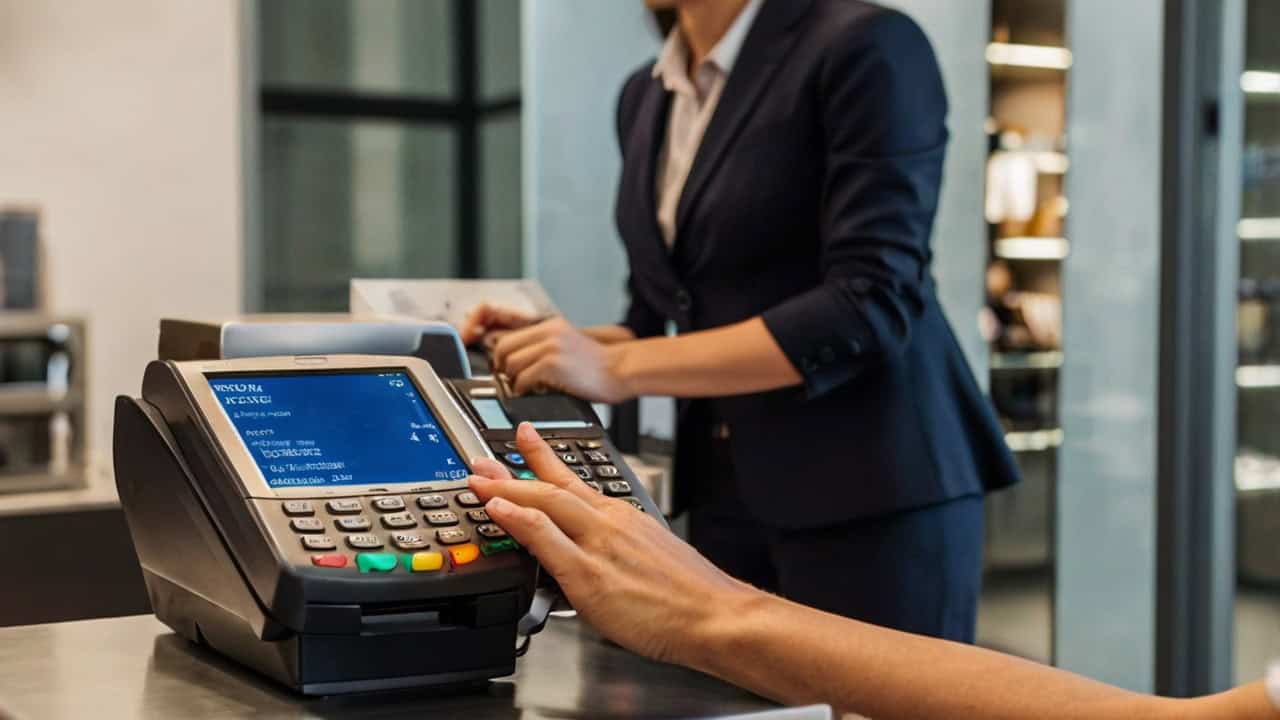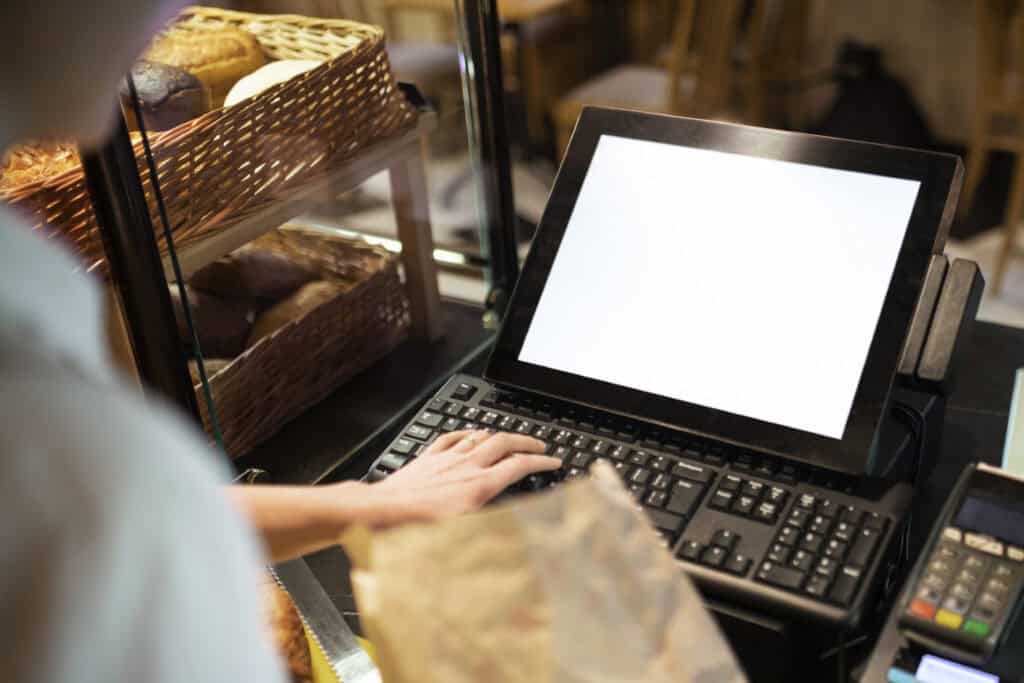
By alphacardprocess October 1, 2025
The retail landscape is competitive and data-driven marketing is crucial for retailers who want to appeal to customers and grow their sales. POS systems are not just transaction processing tools anymore, they manage sales and customer data. From shopping history and product favorites, to the time of day they most often shop, POS systems deliver insights that retailers can use to shape promotions, stock products and create shopping experiences shoppers will love.
For Oregon retailers, local marketing presents a unique opportunity. Simply by tracking regional trends, season-based purchasing habits and community preferences, businesses can design campaigns that appeal to local clientele—thus generating foot traffic as well as loyalty. Whether a boutique in Portland, a coffee shop in Eugene, or a specialty store in Bend, the ability to harness POS system data allows retailers to target their audience with precision, offering promotions and personalized experiences that encourage repeat visits. Let us understand more about this in detail.
Understanding POS Systems and Data Collection
With modern POS systems being connected to the cloud and e-commerce platforms, retailers are now able to get a consolidated view over all sales channels. The data systems take in a lot of different types of information that can be analyzed to take better marketing and operational decisions.

Types of data captured include:
- Transaction Record: Specific items, quantities purchased, purchase time and payment method. This is what helps retailers become aware of best-selling product, peak shopping times and seasonal trends.
- Customer Profiles: Contact information (e.g. email, phone numbers), loyalty membership and historic purchase behaviour. These profiles support customized marketing and focused promotion.
- Stock and Product Performance: Get a view of popular or underperforming stock times offers input into the reordering and promotional strategies.
This data is then securely stored on POS systems, often tokenized and encrypted to keep personal customer details safe. Merchants are able to access and scrutinize data through reporting dashboards, analytics modules or third-party business intelligence applications. Being able to turn POS systems into actionable knowledge drives the understanding of consumer behavior and propels inventory optimization plus local marketing campaign planning.
By centralizing and organizing data, POS systems become the backbone of effective local marketing strategies, allowing Oregon retailers to create tailored offers and promotions based on precise, real-time insights.
The Importance of Local Marketing for Retailers
Local marketing is more important now than ever for retailers who want to differentiate themselves in their communities. Consumer behavior in Oregon is highly regionalized between urban, suburban and rural areas, so local campaigns are crucial to increasing engagement. Retailers who use data from their POS system have the power to develop campaigns that cater to local tastes, season-based buying inclinations and community focus.
Benefits of location-specific campaigns include:
- Increased Foot Traffic: By targeting store locators, providing them timely promotions and inviting them into the stores.
- Community Engagement: Adapting messaging to local events, holidays and culture trends will win brand hearts and form closer relationships with customers.
- Repeat Customers: Personalized campaigns based on actual purchase behavior encourage repeat visits and foster long-term relationships.
Local advertising also sets apart smaller merchants from national competitors, who may have no understanding of local neighborhoods. A Portland boutique, for instance, might want to run a seasonal promotion around a local festival while a Bend coffee shop may want to partner with area vendors for cross-promotion of products. Using POS system data, the retailers can monitor customer response to campaigns and fine tune targeting strategies and messaging for maximum impact.
Oregon retailers who understand and utilize local marketing can provide extremely relevant offers that appeal to their target markets, as well as generate sales, ongoing loyalty, and better brand recognition.
Types of POS Data Valuable for Local Marketing
Point-of-sale systems produce a tremendous amount of data that retailers can use to drive local marketing efforts. Key types of data include:
- Purchase Patterns: Best-sellers, hours peaking sales and trends over the seasons point to how promotions and inventory should be shaped. For instance, a ski shop in Mount Hood might want to concentrate on winter gear during December and January.
- Customer Demographics: The age, gender, loyalty membership and place of residence give retailers the ability to break down their audiences and personalize offerings. This makes targeted campaigns possible, say for instance advertising “green” products to green-minded consumers in Eugene.
- Payment Method Insights: Knowing how much people are paying (cash, credit/debit card, mobile wallet or BNPL) allows you to optimize your checkout and marketing messaging. This knowledge can also inform promotions related to certain payment preferences.
- Promotional Response: By monitoring redemption of coupons, discounts and loyalty offers retailers can assess campaign effectiveness and tweak strategies for more engagement.
- Inventory Insights: POS systems draw attention to bestsellers and slow moving items, prompting targeted promotions and dynamic bundling options to move inventory.
By analyzing that information, retailers in Oregon can find ways to provide custom promotions, direct campaigns and strategic product placements. The POS system information forms the cornerstone of a data-driven set of local marketing tactics that businesses can use to better engage their customers, drive repeat visits and unlock the full value of each sales opportunity.
Analyzing POS Data for Marketing Insights
Converting raw POS data to actionable insights is key to local marketing success. Retail KPIs can help retailers effectively analyze promotions, pricing and stock management for better decision making.

Methods of analysis include:
- Reporting Dashboards and KPIs: Built-in POS dashboards show data like overall sales, average transaction value, and redemption rates, to give you a birds-eye view of your business’ performance.
- Customer Segmentation: Dividing customers depending on the purchase behavior, demographics or if they belong to a loyalty program allows for super targeted campaigns. For instance, repeat customers might be given access to special offers, while those first making a purchase could receive welcome deals.
- Trend Analysis: Studying sales trends will help to track seasonal highs and lows, shifts in product popularity and rising buying trends.
- Analytics Tools: Several POS systems have built-in analytics modules. This can help with data visualization, forecasting, and predictive analytics or support integration with business intelligence tools used for more complex analysis.
Decisions are made according to the insights provided by these POS data, such as taking inventory for popular items, offering promotional campaigns during a quiet season and tailoring marketing messages towards specific customer segments. For instance, a Portland-based bookstore may want to market cookbooks to customers who have purchased kitchenware in the past (from POS purchase history).
Creating Targeted Local Campaigns
With intelligence drawn from POS devices, Oregon merchants can develop focused campaigns that will be effective with their market. Effective strategies include:

- Email and SMS Marketing: Customized communications, tied to previous purchases or loyalty participation, encourage repeat visits. For instance, an independent boutique in Eugene can tell customers when there’s a new arrival within the category of items they most often purchase.
- Loyalty Programs: Rewards and points tailored to individual preferences encourage repeat purchases and deepen brand loyalty. POS data helps identify high-value customers for exclusive offers.
- Geotargeted Advertising: Marketing through social platforms and mobile advertising to target specific geographical locations guarantees promos are heard by most relevant customers. Shops can make offers according to local events or current seasons.
- Seasonal and Event-Based Promotions: A great way to grab local attention is to capitalize on events happening around the region such as holidays or a regional farmers market.
- Cross-Promotions with Local Businesses: By collaborating with other nearby businesses around cross-branded offers, merchants can reach new markets and work together as a community of local retailers.
Best practices for these campaigns involve data from the POS system to guide promotions based on customer likes and purchase history. By segmenting messaging according to actionable intelligence, retailers can improve conversion rates, optimize marketing ROI, and add value to their local customers.
Integrating POS Data with Digital Marketing Channels
POS systems can sync with email providers, SMS services and social media applications creating a seamless link between in-store transactions and online marketing.
Retailers can target in-store purchasers with online retargeting, promoting complementary purchase opportunities. For instance, a Bend coffee shop might have sent an email to customers who had recently purchased specialty drinks offering them a discount on pastries. POS data likewise, informs website and mobile app promotions to create a consistent cross-channel experience.
Integration also enables context-driven offers across enterprise channels delivering a seamless customer experience. Transaction-based promotions drive engagement, sales and loyalty by rewarding behavior. This cross-channel approach allows Oregon retailers to get the most value from their POS data, which is leveraged for local marketing campaigns that resonate in-store and online.
Measuring ROI of Local Marketing Efforts
It is important for businesses to track the success of local marketing campaigns so that they can determine that they are working and continue to refine them. POS systems offer insights like sales uplift, redemption rate and repeat purchase timing.
Retailers will be able to see incremental sales from targeted offers, identify loyalty program engagement and gauge effect on geotargeted campaigns. These insights help tailor promotions, messaging and timing to maximise ROI on marketing spend. Ongoing monitoring makes sure resources are spent wisely, on activities that provide measurable outcomes.
Best Practices for Leveraging POS Data

In order to leverage the worth of POS system data, retailers should:
- Maintain and update databases of customers.
- Target audiences for better marketing and promotions.
- Keep your data clean and highest quality – no old or duplicate records.
- Comply with Privacy standards like PCI DSS and CCPA.
- Integrate POS insights with other data types, such as social media analyses and customer surveys, to get a comprehensive view of consumer activity.
These best practices can help Oregon retailers develop personalized and impactful marketing communications that drive engagement, loyalty, and profit.
Conclusion
The point of sale (POS) system has become far more than just recording sales for retailers in Oregon. Leveraging transaction histories, customer profiles, inventory performance and payment preferences, businesses can develop hyper-local campaigns that speak directly to their community. When paired with digital marketing channels, POS data insights empower personalized messaging, geographically-targeted offers and loyalty-based promotions that deepen customer engagement and stimulate repeat business.
In an era of more competitive retail environment, Oregon retailers who leverage their POS system data will be best equipped to win customers, drive loyalty and maintain long term growth through smarter locally focused marketing.
FAQs
1. How can a POS system help Oregon retailers with local marketing?
A POS system captures transaction histories, customer details, and inventory performance. Analyzing this data allows retailers to design personalized and location-specific marketing campaigns.
2. What types of POS data are most valuable for local promotions?
Purchase patterns, customer demographics, payment preferences, and coupon redemptions are especially useful for crafting targeted offers.
3. Can POS system data be integrated with digital marketing platforms?
Yes. Many POS systems connect with email, SMS, and social media tools, enabling seamless cross-channel campaigns that enhance customer engagement.
4. What challenges do retailers face when using POS data for marketing?
Common challenges include data overload, integration issues, privacy compliance, and limited staff expertise in analytics.
5. Why is local marketing so important for Oregon retailers?
Local marketing helps businesses differentiate from national competitors, build stronger community connections, and increase repeat visits from nearby customers.